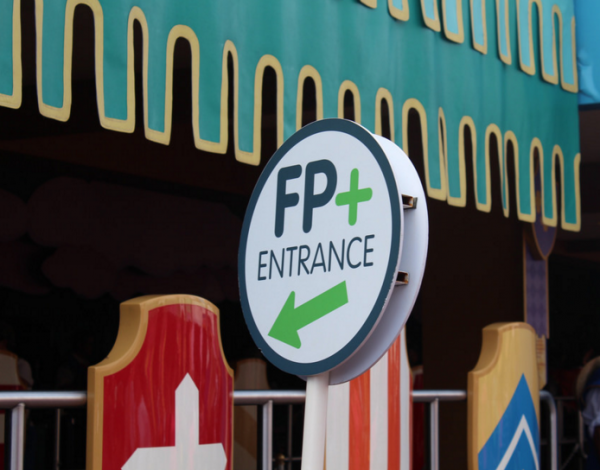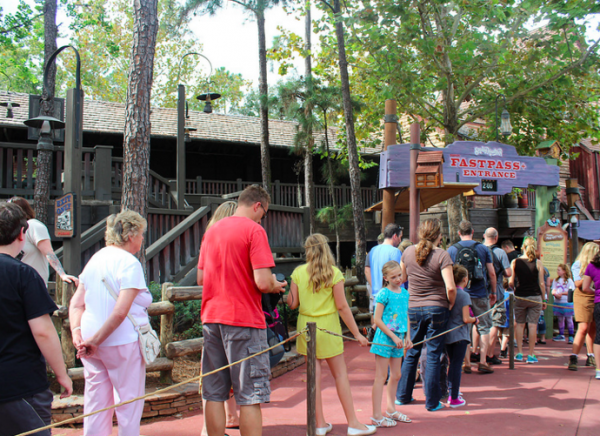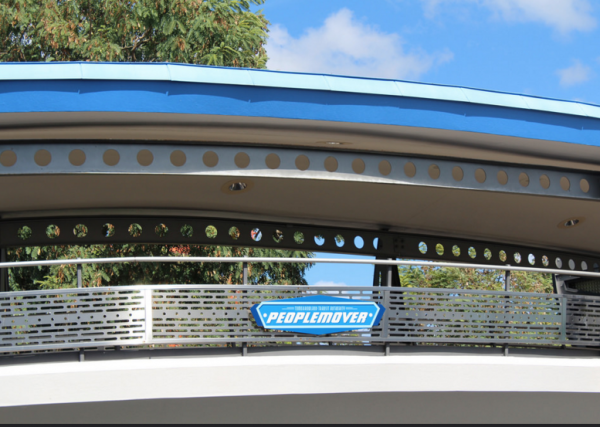3. There's no limit on money (unless it's going to new rides)
The most damning implication of the feature is that the Walt Disney Company's culture, as a whole, is broken. The storytelling ethos created by Walt Disney and his original team of collaborators has largely left a legacy of gamesmanship and flummery in the service of corporate projects.
Walt loved selling his ideas. When he created the idea for EPCOT, he didn't just draft a proposal and write down some thoughts on a few notecards. He made a film explaining exactly what it would be. Apparently, that legacy is still intact at the Walt Disney Company, but it's not quite used in the same inspirational way. It seems the selling of an idea is almost as important as the idea itself. Here, take a look:
"That project itself cost probably close to $500,000," says a source familiar with the concept work. "And I honestly don’t know: Was it real? Or was it just theater?"
There are other stories of entire sets being built for the sole purpose of selling executives on different ideas, or more vaguely, on selling them the idea that each particular department could contribute meaningfully to the project.
And beyond these pricey presentations, Disney's subcontractors – many hired simply as backups in case of failure on the part of Disney's in-house teams – were billing them hundreds of millions of dollars for their services.
But, despite all this money flowing freely, very little of it actually winds up earmarked for a new attraction. Instead, you constantly hear about how Imagineers' ideas for attractions are consistently being edited down due to budget constraints.
Money is no issue for Disney – they've purchased Lucasfilm and Marvel for billions and billions of dollars – and so it remains puzzling as to why they keep it from the people who created one of the most lucrative parts of their empire – the rides.
4. Even when they're right, they're wrong
The strangest part of the piece, by far, is the fact that Disney seems to admit, implicitly, that MyMagic+ is not the game-changing experience they thought it might be. But, in admitting this, they fail to acknowledge the people who were arguing this point the entire time: The Imagineers.
Here's what chief creative officer of Imagineering, Bruce Vaughn, had to say:
"We don’t want to say, ‘Hey, guest, go around and tap with your MagicBand to cause something magical to happen,’ " Vaughn says. "We never want to do it just because we can."
That last part is the important part. Much of the problem the rest of the company seems to have with Imagineering is that they didn't play nice when considering integrated uses of the MyMagic+ technology. This is a valuable concern, yes, but more importantly, Vaughn clearly is saying that just because MyMagic+ can do certain things doesn't mean it necessarily should. It looks as though Imagineering felt like MyMagic+ was nothing more than a gimmick, and so they designed their rides to be able to live in a pre- and post-MagicBand world.
And, it seems they were proven right. Here's the author's paraphrasing of upper management's position on MyMagic+'s implementation in resorts outside Walt Disney World:
MagicBand probably won’t come to Disneyland in Anaheim, California, because restructuring costs would be too high. Shanghai is expected to have such a high proportion of guests with smartphones, he says, that there wouldn’t be any need to export the MagicBand. A MyMagic+ app could essentially replace it.
Staggs seems to be suggesting that the MagicBand may not be necessary in the future.
What does that mean? Well, they've essentially come to the same conclusion as Imagineering – technology progresses so fast, it feels gimmicky to build entire rides around a piece of hardware that might be obsolete in a few short years. When you're building rides with the staying power of things like Pirates of the Caribbean or the Haunted Mansion, that's valid. But, it's frustrating because they don't seem to have gotten any credit for being right. They only get blame for slowing down the process.
5. Those in power don't care about Imagineering's ethos
One party, described only as a “MyMagic+ partner” describes the Disney culture thusly:
"A big part of the company culture is trying to guard against dangerous change. If Disney had followed every trend in the past 60 years, it wouldn’t be Disney anymore."
What those in charge don't seem to realize is that protecting that identity is Imagineering's true purpose. Yes, they design rides and, yes, their work may sometimes seem a bit silly, but in the end, they are the protectors of the ethos created by Walt himself – the story comes first. To executives, that may seem overly negative or traditionalist. They may look like they aren't playing well with other divisions, or that they're simply playing ego games.
But, in reality, they are protecting against dangerous change. That's what Imagineering is tasked to do.
To those in the business world, Disney is an interesting case study in corporate culture. However, the common failings of those cultures – i.e. an overpowering shadow of the past – are actually at the center of what makes Disney so successful. Its embrace of the past and its carefully guided path to the future are features, not bugs. It's hip in the industry to think about data, technology, and “disrupting” traditional methods. But, for a company whose signature parks begin with a replica street from the turn of the century, maybe erasing the past is a mistake. There's room to be traditionalist while being groundbreaking, and the overarching concern, by far, is that Disney executives don't seem to trust Imagineering to do it.




Comments
A DEAFENING sentence in #5....
"What those in charge don't seem to realize is that protecting that identity is Imagineering's true purpose."
AS both a 26 ONCE WDW Cast Member musician and a ONCE visitor, the traditions of yesterday are only a pathetic vague remembrance. In fact, if you, as a new employee at WDW, were to attend the Traditions Class on your first day, you'd be a might disappointed to have the first hour of that first day WASTED by a TSC union member's rant reminding you that "Mickey Mouse is a TEAMSTER!"
In the end, so much of the "magic" depended on it's employees throughout the Disney system and this great article really spells out exactly why the likes of why, the likes of long ago Disney goers and employees are so disappointed and what the new breed of lovers....will never know what they missed.
Sadly I believe Disney is headed towards the Universal, Sea World and Busch Garden's structure. An amusement park that will always be a cut above the others but for the cost it is becoming less worth it. Mine Train was farmed out to outside development and while it is impressive it still doesn't hit all the Disney notes. Magic Bands have removed the magic of Disney for a huge cost to Disney that is now passed on to the guest. What do they really do-? Park admission, fast passes and allow you to buy things. My Disney VISA card did that before. The magic+ fast pass has not improved the wait times but changed the stand-by line to all day line and the fast pass to stand-by. I have always dreamed of working for Disney since I was a kid but after 100+ visits in my life and watching the transition from Walt's dream to Bob Igor's cash cow I am starting to loose that desire to work for the Mouse. Why- because it's not so much the mouse today. It is ever so clear that the Imagineering magic is taking a turn. If you only visit a week or two a year it's difficult for you to see. This year I shall be faced with a tough decision. If Disney removes the option for guests to bring water, snacks and a light meal type items in to the park I will stop purchasing Annual Passes. I am at a breaking point and should Disney remove something that so little that made Disney different from the other parks I will choose to spend my thousands each year elsewhere. I am loosing the magic feeling. I never thought this would happen.
Great article with insights that appear spot on given what we know about Imagineering and MyMagic+. Given the lame feeling of the Frozen announcements today, I'm starting to think that the Disney ethos is really gone.
I worry that we will never see another stand alone attraction from Imagineering such as Expedition Everest. In the Moneyball era, if the attraction doesn't move Blue Rays, downloads or merchandise I don't see it being built.
I am in my early 40's and am a disneyphile, my first trip to Disney being at 6 months old during holiday season in 1972. I have since been to Disney parks more than 200 times. I am in the busiest world and can say that what Disney is currently doing is tragic to be modest. I have spent a great deal of my income on this company over the years happily, but as they move forward they are losing g their appeal simply because it no longer feels like Disney to me! I've seriously considered retiring my annual pass and switching to it's competition Universal, while lacking the nostalgia and wonder that was Disney was famous for, at least I know where I stand with them .